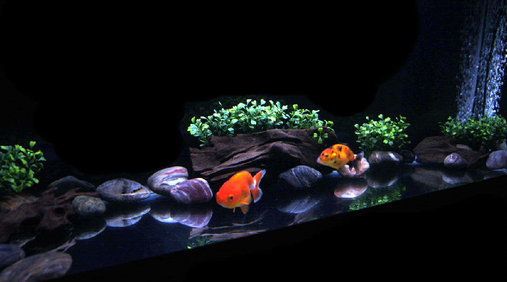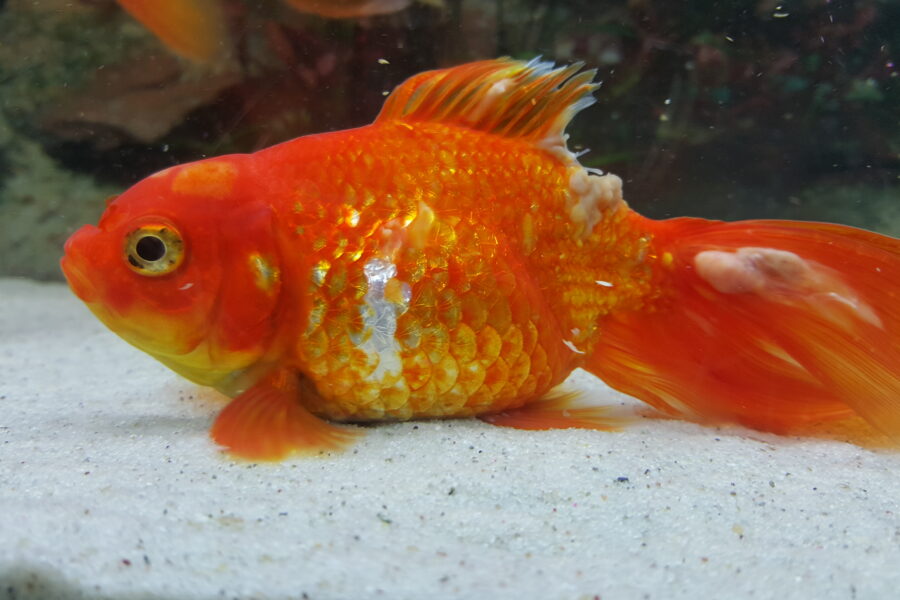
Ever wondered if you feed your goldfish too much or too little? Well, you’re not alone. It’s a question that haunts every pet fish owner at 3 AM. But hold your seahorses, because we have the answers!
This easy-to-read guide will swim you through the nutritional needs of your finned friends, factors that determine their feeding frequency, and even introduce you to the world of automatic feeders. Because who wouldn’t want a little extra time for a catnap or two?
Understanding Goldfish Nutritional Needs
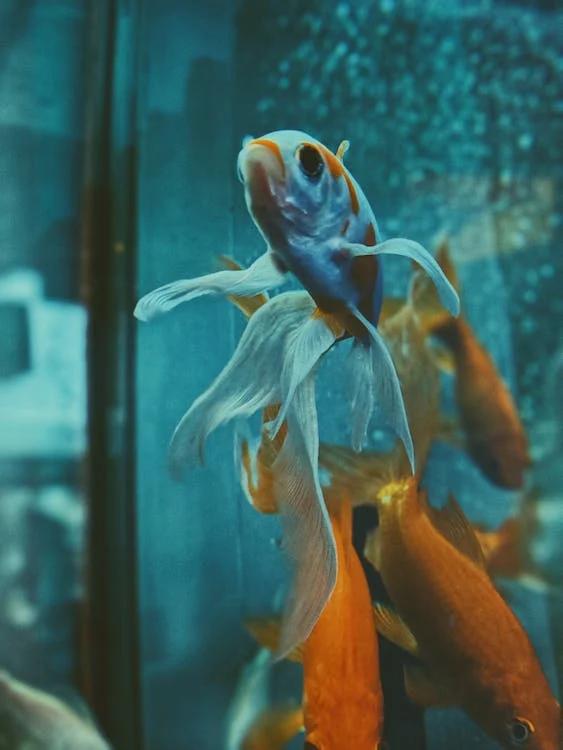
Ever wondered what a goldfish buffet would look like? No, it’s not just scooping up mealworms and tubifex. Like we enjoy a balanced meal of vegetables, protein, and carbs, even our yellow squishy friends crave a healthy mix.
Basic Dietary Needs of Goldfish
Say hello to fishes with high standards. Goldfish need a diet rich in carbohydrates, proteins, and a smidge of fats. Plus, they love chomping on some fiber-filled greens. Your pet fish store should have food which precisely captures all these goodies in small, swimmy-friendly nibbles.
Remember, variety is the spice of life, right? This mantra equally applies to our aquatic pals too.
The Importance of Varied Diet
Goldfish have a bit of a sweet tooth for diversity. Feeding them the same food daily is like eating peanut butter sandwiches every single day. You’d be glaring at the jar in resentment in no time, right? Float in some diversity like spirulina, brine shrimps, and bloodworms. Most importantly, this diverse diet keeps them healthy and vibrant.
Now that we know what’s on their gourmet plate, let’s figure out how to read those labels that come with fish food.
Understanding Fish Food Labels
Fish food labels can be as puzzling as an unsolved Rubik’s cube. However, understanding these labels can ensure your goldfish gets its nutritional fix. Look for a balance of proteins, carbohydrates, and fats—yep, just like your diet chart. To delve deeper into the specifics, check out the articles Discover the Best Foods for Your Goldfish and 5 Best Diet Foods for Your Goldfish.
Cracked the “what to feed” mystery yet? Great! Now that you’re equipped with the knowledge of balanced diets for your goldfish, you’re ready to explore another fascinating aspect – feeding frequency.
Now that we’ve waded through the nutritional needs of a goldfish, get ready to plunge into the river of knowledge on feeding frequency. What affects it? How do we adapt it? Let’s find out in our next segment, ‘Factors Determining Feeding Frequency.’ Stay tuned, pontoon!
Factors Determining Feeding Frequency
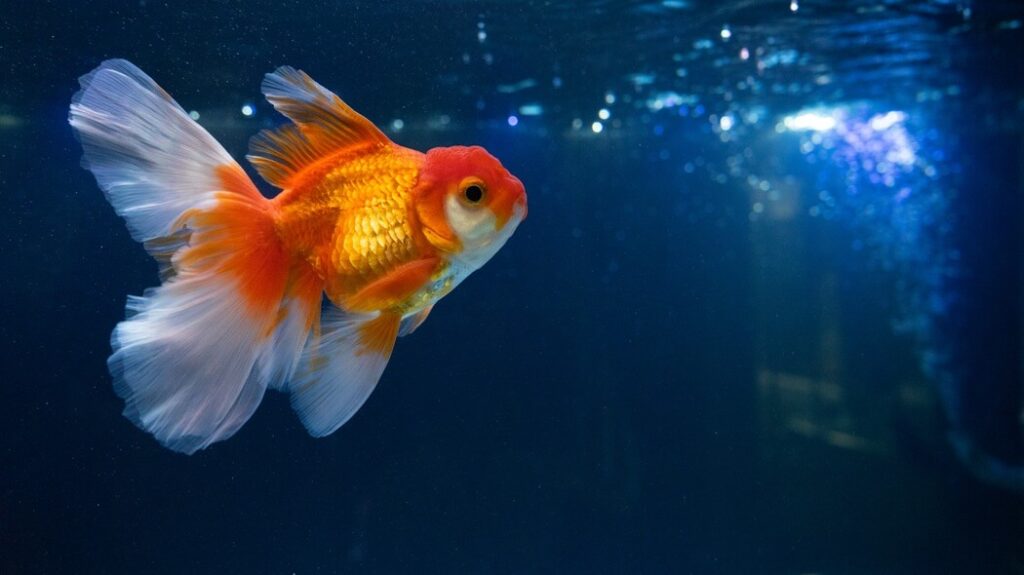
Just like us humans, Goldfish aren’t really one-size-fits-all when it comes to mealtime. Various factors swoop in to play a role. Let’s dive in and get a closer glimpse at these fishy factors that affect their eating habits.
Age of the Goldfish
Remember when your grandma said, “Kids, eat more, you’re growing!”? The same goes for your goldfish. Younger goldfish, still growing and sprouting fins, need to be fed more often. On the flip side, older goldfish chomping at their twilight years don’t burn as much energy and need less food.
Health Condition
Ever had a sick day where you just didn’t fancy eating your usual share of pizza? Goldfish can feel the same. Health issues may change their appetite, and hence, their feeding frequency might need adjustments. Conversely, a healthy, active goldfish might show the appetite of a starved shark.
Water Temperature
Goldfish don’t have built-in sweaters to keep them cozy in cold water. When the temperature drops, their metabolism slows, and so does their hunger. On the other hand, a warm water bath gets their insides grooving, increasing their appetite and the need for more frequent feeds.
Goldfish Species
A large, glamorous Oranda will need more meals per day compared to a petite, demure Bubble Eye. Different species have different nutritional needs, hence the feeding schedule could vary.
Now that we’ve scaled through the factors influencing a goldfish’s dining timetable, you’re probably thinking, “So, how often does my golden swimmer need food?” Don’t fish out your worry hat just yet! Let’s sail over to our next section where we’ll discuss a goldfish’s perfect meal plan.
How Often Should You Feed Your Goldfish?
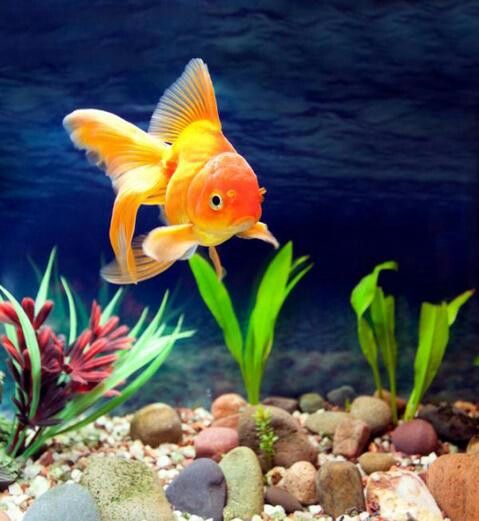
So, we’ve covered the nutritional needs of our finned friends and the factors that determine how much to feed them. Now let’s dive… err… wade… no, let’s plunge right into the frequency of goldfish feedings.
Balancing Proper Nutrition and Water Quality
Here’s the tricky part – adjusting the scales (pun intended) of nutrition versus water quality. Overfeed your goldfish, and you end up with dirty water and a possibly sick fish. Underfeed, and you’ll have a clean tank but a hungry, unhealthy fish. Aim for the sweet spot that ensures a well-fed goldfish and clear, clean water.
Now, let’s swim on over to the general rules of feeding frequency.
The Rule of Thumb for Feeding Your Goldfish
Here’s the one-size-fits-all advice. Feed your goldfish small amounts 2-3 times daily. But remember, this is one size may NOT fit all. You need to adjust this as per the factors discussed earlier.
So, you’ve got the general rule down – awesome sauce! But how do you tell if Goldie is overfed or underfed?
Recognizing Signs of Overfeeding and Underfeeding
Let’s play detective. Overfeeding results in excess waste, cloudy water, and an inactive fish. Underfeeding, on the other hand, may lead to a skinny, underactive goldfish always scavenging for food.
Great! You’ve mastered the when, what, and how much of goldfish feeding. Now, let’s streamline this process. Bring on the automatic feeder!
So, stay put (or keep floating, in this case) and get ready to explore the world of automatic feeders, the tool that promises to make your goldfish feeding chore a breeze.
Automatic Feeders: Solution for Consistent Feeding
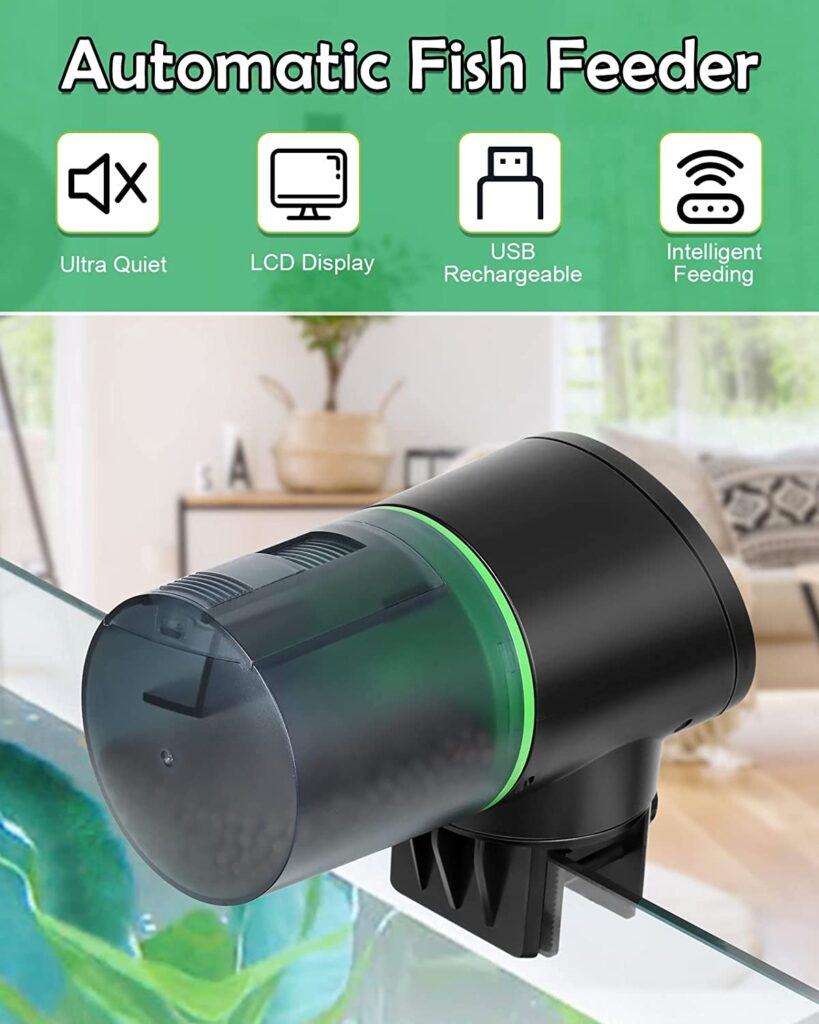
Let’s chat about an exciting game-changer for goldfish feeding- the automatic feeder! Yeah, the smart tech world has broken into the fishy universe too.
Benefits of Using an Automatic Feeder
So, why should you splash out on an automatic feeder for your gill-bearing buddies? First, it eliminates the worry of overfeeding or underfeeding, Goldie Locks will get just the right amount of food every time. They prevent food wastage too and keep the aquarium environment cleaner. Bonus, they come in handy when you are away. Your aquatic pet won’t turn into a ‘hungry, hungry goldfish’ if you’re stuck at the ‘humans only’ party late into the night.
Now that you’re reeled in by the benefits of an automatic feeder, let’s get into choosing the right one.
Choosing the Right Automatic Feeder
Choosing the best automatic feeder for your goldfish can feel like a daunting task, but it doesn’t have to be. The key is to focus on key features that will cater to your needs and the needs of your goldfish. Consider the feeder’s food capacity. Will it hold enough food to feed your fish while you’re away? You also need to think about feeding frequency. Can the feeder dispense food at the necessary intervals your fish require?
Another important factor is the power source. Many feeders are battery operated, but some can be plugged into a power outlet. Consider what will work best for you and in your specific setting. The feeder should be simple to use and reliable, as your goldfish’s dietary needs are dependent on it.
One great way to ensure that you’re getting a good quality product is to read reviews from other customers who have purchased and used the same feeder. This can provide insight into the feeder’s performance and reliability that you might not find in the product description.
Once you have all this information, it becomes significantly easier to choose the right automatic feeder for your goldfish. For a comprehensive list of options, you can check out our article on 10 Top Automatic Goldfish Feeders Options. This guide will give you a detailed review of the top feeders currently on the market, aiding you in making an informed decision. Remember, the health and wellbeing of your goldfish depend on the choices you make, so take your time to choose wisely.
Setting Up and Using an Automatic Feeder
Set up is easier than memorizing fish species; even Nemo could do it. Make sure you fix it firm and secure on the tank. Then, fill the feeder with your goldfish’s favourite grub. Program the quantity and frequency of feeding based on our chat about feeding frequency and voila, you’re done! Your only task now is to keep an eye on the feeder to ensure it dispenses food evenly and timely. Go on, give yourself a pat on the back.
As we wrap up this section, we hope you’ve found our guide on automatic feeders informative and helpful. In short, they’re great for consistent feeding, choosing one requires a bit of research, and setting up is a breeze.
Final Thought
Understanding your goldfish’s nutritional needs is integral to its overall health. Notably, basic dietary needs should be paired with variety, and a good grasp of fish food labels is indispensable. Equally important is accounting the factors that determine feeding frequency, including the goldfish’s age, health, water temperature, and species.
To ensure a great balance between nutrition and water quality, a rule of thumb with feeding frequency coupled with keen observation for signs of over or underfeeding should be practiced. Furthermore, using an automatic feeder can help maintain consistency, but always choose the right one that fits your needs. Ultimately, proper feeding management ensures a happy and healthy goldfish.
Frequently Asked Questions (FAQ)
Question: What are the basic dietary needs of a goldfish?
Answer: Goldfish require a balance of proteins, carbohydrates, fats, fiber, vitamins, and minerals, majorly found in specialized goldfish food.
Question: Why is a varied diet important for a goldfish?
Answer: A varied diet ensures your goldfish gets all the necessary nutrients, enhances their overall health, and brings out their vibrant colors.
Question: How do I understand a fish food label?
Answer: Fish food labels usually display ingredients in order of prominence. Look for high-quality proteins as main ingredients and a harmony of other nutritional components.
Question: How frequently should I feed my goldfish?
Answer: Generally, feed your goldfish once to twice a day. However, it depends on factors like species, age, health, and water temperature.
Question: How does water temperature affect goldfish feeding frequency?
Answer: Goldfish metabolism slows down in cold water leading to less frequent feeding, while it increases in warmer water necessitating more frequent feeding.
Question: What are the signs of overfeeding my goldfish?
Answer: Overfeeding can lead to uneaten food, which fouls the water, and cause physical symptoms like bloating, swim bladder disorders, and lethargy.
Question: What are the benefits of using an automatic feeder?
Answer: An automatic feeder assures consistent and timely feeding, prevents overfeeding or underfeeding, and can be programmed for different feeding times.
Question: How do I choose the right automatic feeder?
Answer: Consider factors like capacity, programming flexibility, battery life, reliability, and whether it’s compatible with your goldfish’s diet.
Question: How do I set up an automatic feeder?
Answer: Install it according to the product guidelines, fill it with suitable food, then program it for feeding frequency and portion sizes per your goldfish’s needs.

